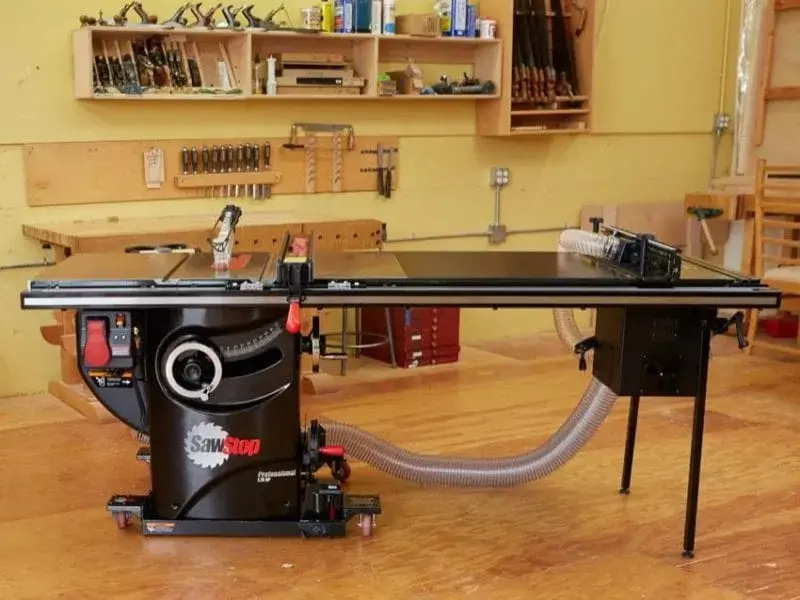A table saw is a versatile and powerful woodworking tool that can cut through various materials with ease. But not all table saws are created equal. There are different types of table saws, each with its own features, advantages, and disadvantages. One of the most common and popular types of table saws is the cabinet saw. But what makes a table saw a cabinet saw? And why should you consider getting one for your woodworking projects?
The Main Difference Between a Table Saw and a Cabinet Saw
The main difference between a table saw and a cabinet saw is the design and construction of the base. A table saw has an open base, which means that the motor and other components are exposed and attached to the underside of the table. A cabinet saw, on the other hand, has a closed base, which means that the motor and other components are enclosed in a cabinet that supports the table. This design difference has several implications for the performance, durability, and safety of the saw.
The Benefits of a Cabinet Saw
A cabinet saw offers many benefits over a table saw, such as:
More power and stability: A cabinet saw typically has a larger and more powerful motor than a table saw, which allows it to cut through thicker and harder materials with ease. A cabinet saw also has a heavier and sturdier construction, which reduces vibration and noise and improves accuracy and precision.
Better dust collection and safety: A cabinet saw has a built-in dust collection system that connects to the cabinet and collects the dust and debris generated by the cutting process. This not only keeps the work area clean and tidy, but also protects the user from inhaling harmful particles and reduces the risk of fire. A cabinet saw also has a better safety system, which includes a riving knife, a blade guard, and an anti-kickback device, that prevents the workpiece from being thrown back at the user or causing injury.
More features and accessories: A cabinet saw usually comes with more features and accessories than a table saw, such as a larger and smoother table surface, a more accurate and adjustable fence, a more precise and easy-to-read miter gauge, and a more versatile and convenient blade tilt mechanism. A cabinet saw also has more options for adding additional accessories, such as a dado blade, a crosscut sled, a tenoning jig, and a router table, that can expand the functionality and versatility of the saw.
The Drawbacks of a Cabinet Saw
A cabinet saw is not without its drawbacks, however. Some of the disadvantages of a cabinet saw are:
- Higher cost and maintenance: A cabinet saw is more expensive than a table saw, both in terms of initial purchase and ongoing maintenance. A cabinet saw requires more space, more power, and more care than a table saw, which can add to the operating costs and hassle. A cabinet saw also has more parts and components that can wear out or break down over time, which can increase the repair and replacement costs.
- Less portability and mobility: A cabinet saw is heavier and bulkier than a table saw, which makes it harder to move and transport. A cabinet saw is not suitable for jobsites or workshops that have limited space or require frequent relocation. A cabinet saw is best suited for permanent or semi-permanent installation in a dedicated and spacious woodworking shop.
Conclusion
A table saw is a cabinet saw when it has a closed base that encloses the motor and other components in a cabinet that supports the table. A cabinet saw offers more power, stability, dust collection, safety, features, and accessories than a table saw, but it also costs more, requires more maintenance, and is less portable and mobile than a table saw. A cabinet saw is an ideal choice for serious and professional woodworkers who need a high-performance and versatile tool for their woodworking projects. A table saw is a more affordable and practical option for hobbyists and beginners who need a basic and reliable tool for their woodworking needs.

